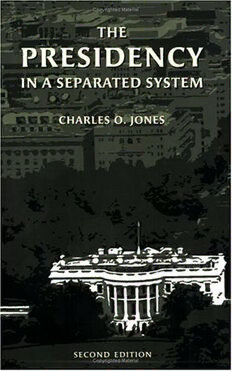
The Presidency in a Separated System PDF
423 Pages·2005·1.62 MB·English
Most books are stored in the elastic cloud where traffic is expensive. For this reason, we have a limit on daily download.
Preview The Presidency in a Separated System
Description:
Media coverage and popular interpretations of American government typically concentrate on the presidency. Observers often attribute the fortunes of an entire government to one person or his small circle of advisers. In an updated and revised edition of his classic book, Charles O. Jones explains how too exclusive a focus on the presidency distorts the picture of how national government really works. He explores how presidents find their place in the permanent government and how they are “fitted in” by others, most notably those on Capitol Hill. Powerful though it may be, the Oval Office is not the source of all authority in government. Jones examines the organizational, political, and procedural challenges facing presidents, as well as the role of public approval. The author compares the post-World War II presidents and identifies their strengths and weaknesses in working within a separated system of government. The new edition extends through the Clinton and George W. Bush presidencies. It explains how split-party control, differing partisan strategies, and our recent “narrow-margin politics” have changed the Washington landscape, reshaping relations among the branches of government. Once again, in this edition, the author draws several lessons for presidents working in a separated system. Most have heeded these lessons, while analysts often ignore them in favor of perpetuating unrealistic expectations of what presidents can do.
See more
The list of books you might like
Most books are stored in the elastic cloud where traffic is expensive. For this reason, we have a limit on daily download.
